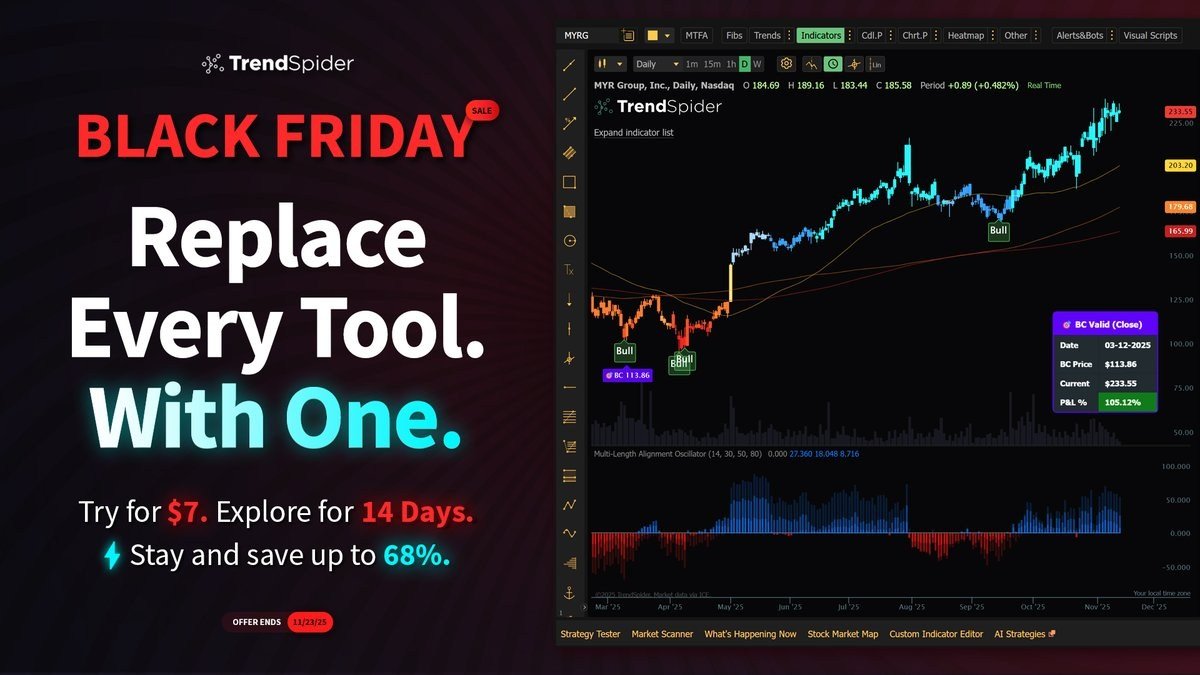Finding the best small-cap stocks with hugh growth potential has long been a favorite hunting ground for investors seeking explosive growth. While they carry higher risks, they also offer the potential for hugh returns if chosen wisely.
The key lies in knowing how to systematically screen for high-quality small-cap stocks that are poised for upside.
In this guide, you’ll learn how to use a stock screener to filter for promising small-cap opportunities. We’ll walk through a complete filter setup and explain the rationale behind each setting so you can adapt it to your needs, regardless of the screening tool you use.
Why Focus on Small-Cap Stocks?
Small-cap stocks are typically defined as companies with a market capitalization between $300 million and $2 billion. These companies are often in the earlier stages of growth and may be underfollowed by institutional investors. This creates an edge for retail traders and investors who know what to look for.
Advantages:
- Higher growth potential compared to large caps
- Undiscovered opportunities with less analyst coverage
- More volatility, which can be favorable for swing traders and momentum investors
However, the same volatility and lack of liquidity can be risks. That’s why screening intelligently is so important.
Best Small-Cap Stocks Screener Filters
Here’s a screener setup designed to help you uncover high-potential small-cap stocks that are showing strong price and volume action while avoiding illiquid or overly speculative names.
Purpose: Identify small-cap companies with strong earnings and sales growth, solid momentum, and sufficient liquidity — offering high upside potential for swing or position trades.
Best Small-Cap Stock Screener
- Market capitalization: Between $300 million and $2 billion
- Share price: ≥ $3.00
- Average daily volume (10-day): ≥ 300,000 shares
- 6-month price performance: ≥ 10%
- Relative volume: ≥ 1.5x average daily volume (volume surge)
- Earnings per share (EPS) growth – trailing 12 months: ≥ 20%
- Sales (revenue) growth – year-over-year: ≥ 15%
- Debt-to-equity ratio: < 1.0
- Return on equity (ROE): ≥ 10%
- Price relative to 50-day moving average: Trading above 50-day MA
- Relative Strength Index (RSI 14): Between 50 and 70 (mild momentum)
This Stock Screener Can Be Used On…
Screener Filters Explained
Here’s a deeper look into each of the filter settings, to give you a better understanding.
1. Market Capitalization: $300M to $2B
- This defines the small-cap range.
- You can expand this if you’re open to micro-caps (under $300M) or mid-caps (over $2B).
- On TradingView, use the “Market Cap” filter and set a range:
> 300M and < 2B.
2. Price: > $3.00
- Avoids penny stocks, which are prone to manipulation and liquidity issues.
- You can set a higher threshold if you prefer more established names (e.g., $5+).
3. Average Daily Volume: > 300,000 shares
- Ensures liquidity, so you can enter/exit trades without excessive slippage.
- Consider raising this to 500,000 or even 1M for more liquid candidates.
- This also filters out stale or forgotten stocks with no market interest.
4. 6-Month Price Performance: > 10%
- Looks for stocks that are trending upward over a meaningful time frame.
- Positive momentum suggests market interest and a strong narrative.
- You can adjust this to 3-month or 1-year performance depending on your time frame.
5. Relative Volume: > 1.2
- Indicates that the stock is trading with at least 20% more volume than usual.
- A sign of renewed interest from institutions, traders, or catalysts.
- On TradingView, you can use a custom indicator or script to track this.
6. EPS Growth (TTM): > 15%
- Profitability is a sign of business health, especially in small caps.
- You can swap this with revenue growth if the company is reinvesting profits.
- For long-term investors, consider multi-year EPS CAGR.
7. Debt-to-Equity: < 1.0
- Screens for companies that aren’t over-leveraged.
- Small companies with high debt loads can be risky if rates rise or credit tightens.
- Use this to spot healthier balance sheets.
8. RSI (14): Between 45 and 65
- Focuses on stocks that are not overbought but still showing upward momentum.
- This range avoids extremes and keeps you in potential breakout zones.
- RSI near 50 is often the “launchpad” for trend continuation.
Here’s a summary in table form.
| Filter | Setting | Explanation |
|---|---|---|
| Market Capitalization | $300M – $2B | Targets the small-cap range. These companies have room to grow but aren’t micro-caps. |
| Price | > $3.00 | Filters out penny stocks that are often volatile or illiquid. |
| Average Daily Volume | ≥ 300,000 shares | Ensures liquidity for easier trade execution. |
| 6-Month Price Performance | > 10% | Screens for stocks with upward momentum over the past half year. |
| Relative Volume | > 1.2 | Looks for stocks with increased trading interest vs their average. |
| EPS Growth (TTM) | > 15% | Targets companies growing earnings over the trailing 12 months. |
| Debt-to-Equity | < 1.0 | Filters for lower-risk balance sheets with manageable debt. |
| RSI (14) | Between 45 and 65 | Focuses on stocks with healthy momentum — neither overbought nor oversold. |
How to Customize These Filters for Your Strategy
While the above setup works well for growth-focused investors, here’s how you can tailor it:
For Swing Traders:
- Tighten RSI range to 50–60 to catch near-breakout setups.
- Add a “Price Breakout” filter: price crossed above recent resistance.
- Use shorter-term performance metrics: 1-month or 3-month gain.
For Long-Term Investors:
- Focus more on fundamentals like 3Y revenue CAGR, ROE, and profit margins.
- Look for growing dividend initiators among small caps.
- Filter for “low beta” stocks to reduce volatility risk.
For Value Investors:
- Use Price-to-Earnings or Price-to-Sales < industry average.
- Add “Net Cash per Share > 0” to find cash-rich companies.
- Focus on insider buying, book value, and low price-to-free cash flow.
Interpreting the Results
Once your screener gives you a list of candidates, don’t rush in. Here’s how to vet them:
- Check the chart: Is it forming a base? A breakout? A high-volume move?
- News & catalysts: Earnings beats, contract wins, new products?
- Earnings calendar: Avoid stocks about to report unless you’re playing earnings.
- Volume patterns: Look for accumulation days and orderly pullbacks.
- Institutional ownership trends: Is smart money accumulating?
Use this screener as a starting point, not the final word. Always do deeper research.
Final Thoughts
Finding the best small-cap stocks isn’t just about picking random tickers with low market caps and hoping they go up. It’s about systematically narrowing your focus using a stock screener with smart filters.
This guide gave you a powerful setup that balances growth, momentum, liquidity, and basic fundamentals. Whether you’re a trader or investor, adapt these filters to your style and stay consistent in applying them.
I hope you found this useful.
Stay tuned at ScreenerIQ.com for more deep dives and filter strategies.






